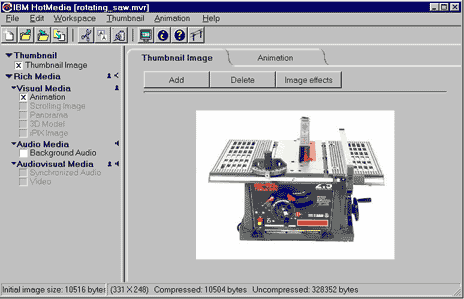William Wilson
Colorado Springs, Colorado
wwilson@offspring.net
HotMedia
Java was developed at Sun Microsystems in 1991 and was originally intended for smart appliances (Ditto,1998). It rapidly evolved into a useful language for delivering multimedia content over the internet. It can deliver multimedia content to different computer platforms as long as they have Java enabled browsers. It does this by delivering the content within small packaged programs called applets. The browser reads the applets and performs the necessary program instructions such as displaying a video and allowing for more viewer interaction without the use of plugins.
Java on a web page creates a rich media experience for viewers. Market research has demonstrated that rich media can enhance a business web page. Customers stay at the site and eventually buy something (Senna,2000).
Creating Java applets can be difficult for people with limited Java programming experience. IBM's HotMedia allows the Java novice to create rich Java media within a fairly easy to use graphical user interface (Figure 1). HotMedia can assemble audio, video, and still images into Java applets that are easily placed into an html document.
HotMedia can produce the following types of media:
• Thumbnails that can scroll and include hotspot links
• Animation from a series of single images and can be interactive
• Virtual Reality 3D. http://vr-objects.com/
• Panoramic shots http://haughtmedia.webjump.com/portpan/data/pan.html
• Background audio.
• Sycnchronized video with audio.
• Streaming video and audio down to 28kbs. http://haughtmedia.webjump.com/portpan/data/port.html
Figure 1

Advantages:
Free from Ibm http://www.IBM.com
Products can be viewed on any Java enabled browser without plugins
Disadvantages:
Can not animate vector graphics.
Not the best documentation.